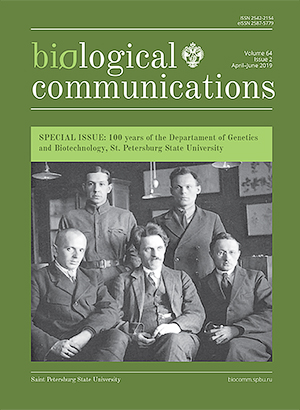From past to future: suppressor mutations in yeast genes encoding translation termination factors
DOI:
https://doi.org/10.21638/spbu03.2019.202Abstract
The study of the SUP45 and SUP35 genes of yeast Saccharomyces cerevisiae in the laboratory of Physiological Genetics of St. Petersburg State University began in 1964 when the first omnipotent nonsense suppressor mutations were obtained. During the following 55 years, a lot of information about these genes has been gained through the research efforts of various laboratories. Now we know that SUP45 and SUP35 encode translation termination factors eRF1 and eRF3, respectively. Both genes are essential, and sup45 and sup35 mutations lead not only to impaired translation but also to multiple pleiotropic effects. The aim of this review is to summarize known data about suppressor mutations in SUP45 or SUP35 genes.
Keywords:
translation termination, suppression, SUP45, SUP35, eRF1, eRF3, nonsense mutations, missense mutations, [PSI ] prion, S. cerevisiae
Downloads
References
Downloads
Published
How to Cite
Issue
Section
License
Articles of Biological Communications are open access distributed under the terms of the License Agreement with Saint Petersburg State University, which permits to the authors unrestricted distribution and self-archiving free of charge.





